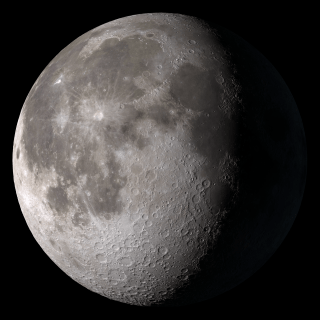As the Moon orbits Earth, it rotates at such a rate as to keep the same face aiming our way… but not exactly the same face, as shown in this excellent video from NASA’s Goddard Space Flight Center (lovingly annotated by the Bad Astronomer himself, Dr. Phil Plait.)
[/caption]
The Moon has a slight wobble to its axial rotation, and over the course of a month its orientation shifts slightly — an effect called libration. Think of it like a top or gyroscope spinning on a table; it doesn’t spin perfectly vertically, but rather sways a bit while it spins. Libration is that sway.
In addition to that movement, the Moon also moves closer to and further from the Earth over the course of a year due to its elliptical orbit. This makes it appear to change size slightly.
Except for the Moon’s phases, such effects aren’t immediately obvious from one night to the next. But when assembled into a high-resolution video using images and laser altimetry data maps from the Lunar Reconnaissance Orbiter, the monthly motions of the Moon become incredibly clear!
This video shows all the views of the Moon for the entire year of 2012.
Thanks to Phil Plait of Discover Magazine’s Bad Astronomy blog for adding the music and descriptions to the GSFC’s amazing video. What a marvelous night for a Moon dance!
See the current Moon phase and the original video on the Goddard Space Flight Center’s “Dial-A-Moon” page here.
Video: NASA/Goddard Space Flight Center Visualization Studio. Notations by Phil Plait. Music by Kevin MacLeod/incomptech.com.


I really don’t understand how they went forward in time to capture all the remaining days of 2012, but can you use the tech to check for future earthquakes, tsunamis, etc?
The original link http://svs.gsfc.nasa.gov/vis/a000000/a003800/a003894/
explains how archival data will be used to show images of the how the Moon will look in 2012 in real time (based on the assumption that it won’t be blown up by aliens before the year is out). Agree this might have merited a tiny bit of clarification.
Such technology is required, for example, for development & verification purposes of new optical space navigation systems. In this connection, test image material is needed, which can now be generated — thanks to the detailled LRO LOLA data — with a realistic surface illumination (shadows, among other things). Here is some additional information on how a Moon surface illumination simulation software will help to develop new navigation technologies:
http://go.rene-schwarz.com/masters-thesis
(It is my own Master’s Thesis, which will be published in a couple of weeks together with an open source software for the simulation of the Moon’s surface, which can do pretty much as same as NASA did in the video.)